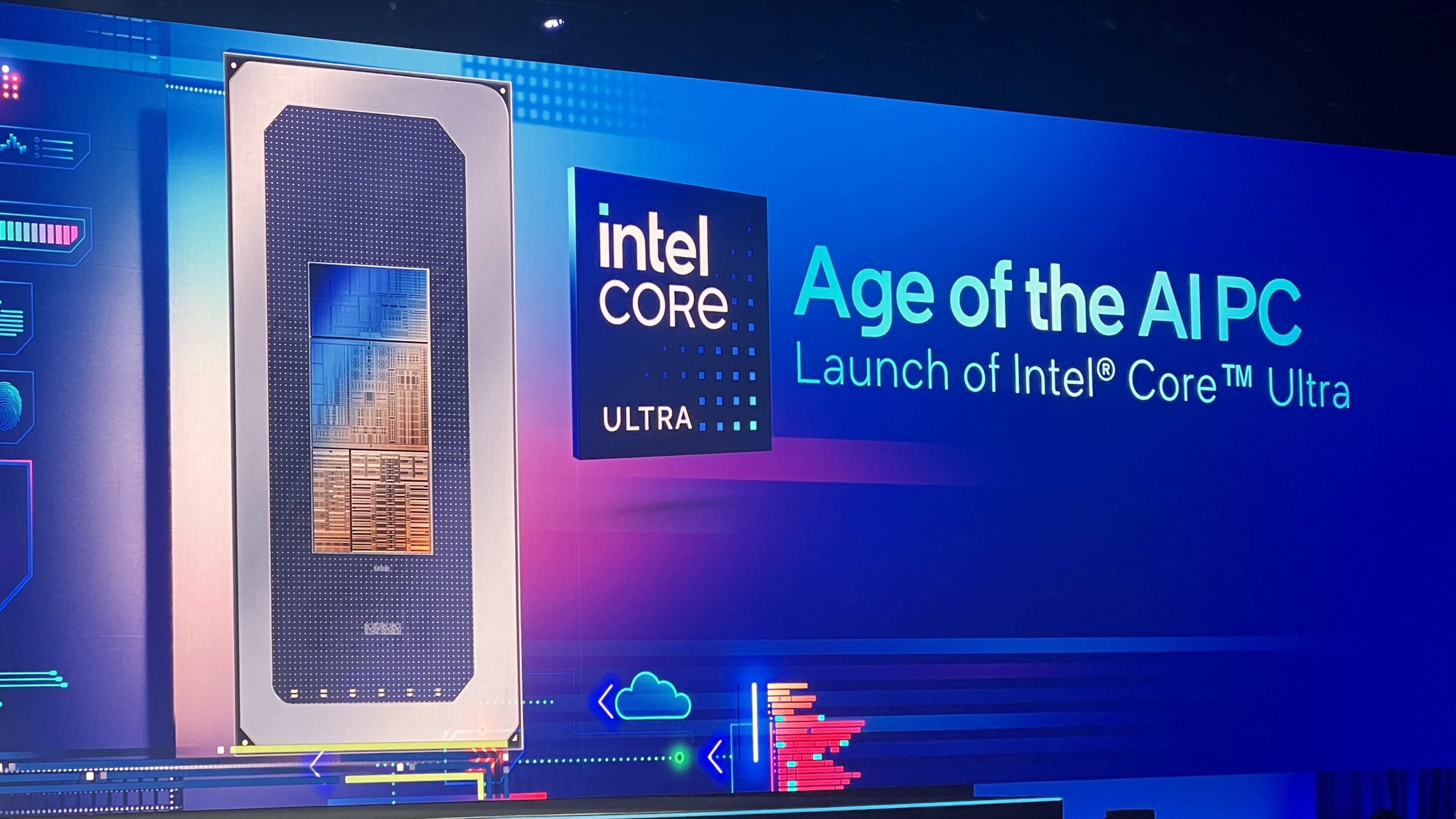Intel announces new Core Ultra CPU with AI processing engine coming in December
The Intel Core Ultra could bring practical AI to the Windows PC

Intel announced its newest processors, the Intel Core Ultra series, during the Intel Innovation keynote on Tuesday, which it says will usher in the age of the "AI PC" later this year when the chip hits the market.
The new Intel processors, codenamed Meteor Lake, will be the company's first chips for the consumer market to feature a dedicated neural processing unit (NPU), which will power AI-driven workloads for consumers, Intel CEO Pat Gelsinger said during the opening keynote of the Intel Innovation conference in San Jose, California. Gelsinger also confirmed that the new processors will launch on December 14 of this year.
“AI will fundamentally transform, reshape, and restructure the PC experience – unleashing personal productivity and creativity through the power of the cloud and PC working together,” he said. “We are ushering in a new age of the AI PC.”

Along with the NPU and what Intel claims will be impressively "power-efficient performance" thanks to advanced 7nm Intel 4 process technology, Intel's new chip series will bring an enhanced integrated GPU powered by Intel Arc graphics architecture. While we haven't gotten to see the chips for ourselves yet, the improved GPU alone could help make these the best processors of 2023, especially for more budget-friendly systems that don't need a dedicated GPU.
The Core Ultra is the company's first consumer CPU to feature a multi chiplet module (MCM) design. This design uses two or more silicon slices—which contain the transistors that power a computer, called dies—that are bonded together at a microscopic level to allow for more flexible chip development than is possible with a single slab of monolithic silicon companies have used in the past.
The MCM design will be backed by Intel's Foveros packaging technology, which is the same chip-bonding technology that went into the ill-fated Lakefield chip that powered some low-power mobile devices that were poorly received, and so was quickly put into End of Life.
While there were many issues with the Lakefield chip other than the Foveros packaging that kept it from being successful, the Core Ultra chips represent a major design shift for Intel's processors, bigger even than its move to a hybrid-core architecture with Intel Alder Lake back in 2022, so Intel is putting a lot of faith in this tech to power its future chip development.
Sign up for breaking news, reviews, opinion, top tech deals, and more.
Bringing AI applications into the personal computer

A major part of this Year's Intel Innovations conference this year is an update to Intel's distribution of the OpenVINO AI toolkit, which provides developers a common language to use when building out AI applications and will leverage the new Intel hardware.
Intel's latest 2023.1 version of the toolkit is optimized to utilize the NPU in the Intel Core Ultra processor, which Intel and developers hope will in turn make practical development of AI applications for PCs with Core Ultra chips both easier and more appealing for both developers and consumers.
“We’ve been co-developing with Intel teams a suite of Acer AI applications to take advantage of the Intel Core Ultra platform,” Jerry Kao, chief operating officer of Acer said during the keynote, “developing with the OpenVINO toolkit and co-developed AI libraries to bring the hardware to life.”
To show what Intel's Core Ultra could do, Kao demonstrated an Acer Swift laptop running an Intel Core Ultra chip running a Stable Diffusion generative AI-powered app that took a basic photo of a ballerina and generated a whole new image from it, locally, and created a parallaxing desktop wallpaper with it in under a minute.
Generative AI and multimedia uses immediately come to mind, as do device personalization, settings controls, and others that have already started cropping up on Windows PCs in recent years, but which haven't had specialized hardware to power them.
Taking a cue from Apple's playbook
The Intel Core Ultra may be the first chip from Team Blue that introduces an NPU, but it's not the first processor on the market to do so. That honor would go to Apple, which introduced a neural engine into its A11 Bionic chip back in 2017, and later its Apple M1 Chip in 2020.
These chips, especially on mobile devices, have helped power some remarkable advances in the area of photography and video on the best iPhones, but there hasn't really been a groundbreaking "killer app" for these consumer chips yet the way the best graphics cards from Nvidia, as well as its more industrial-strength AI hardware, has powered the generative AI revolution behind ChatGPT, Stable Diffusion, and others.
Still, Intel getting into the NPU game is a smart move, and with the OpenVINO toolkit, there's a lot of incentive for the broad base of developers coding for Intel hardware to find new and practical uses for this NPU. If nothing else, it's something genuinely new from Intel, so it'll be exciting to see how it all plays out once we get the chips in our hands.

John (He/Him) is the Components Editor here at TechRadar and he is also a programmer, gamer, activist, and Brooklyn College alum currently living in Brooklyn, NY.
Named by the CTA as a CES 2020 Media Trailblazer for his science and technology reporting, John specializes in all areas of computer science, including industry news, hardware reviews, PC gaming, as well as general science writing and the social impact of the tech industry.
You can find him online on Bluesky @johnloeffler.bsky.social
